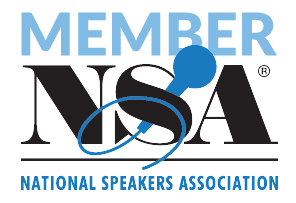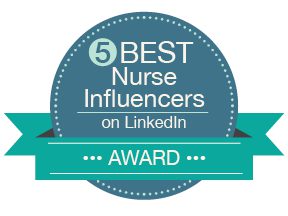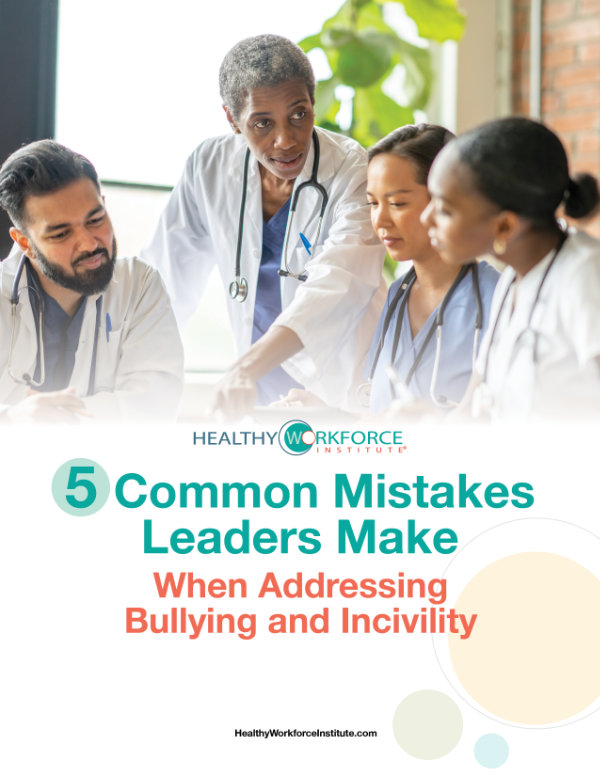 Healthcare professionals are experiencing greater physical and verbal abuse from patients and their family members. Studies show a significant rise in acts of violence within the very same walls where care is provided. There are many reasons – when not feeling well patients are not always on their best behavior. Family members are also stressed when their loved ones are in the hospital. And, some patients feel entitled to receiving care the way they want it – when they want it. To make matters worse, healthcare professionals tend to be empathetic and ignore the abuse because the patient may not be cognitively intact, or may “have cancer”, or – fill in the blank. Whatever the reason, we need to not only better understand why this continues but the specific interventions to address abuse from patients and families so that our healthcare professionals can feel safe at work.
Healthcare professionals are experiencing greater physical and verbal abuse from patients and their family members. Studies show a significant rise in acts of violence within the very same walls where care is provided. There are many reasons – when not feeling well patients are not always on their best behavior. Family members are also stressed when their loved ones are in the hospital. And, some patients feel entitled to receiving care the way they want it – when they want it. To make matters worse, healthcare professionals tend to be empathetic and ignore the abuse because the patient may not be cognitively intact, or may “have cancer”, or – fill in the blank. Whatever the reason, we need to not only better understand why this continues but the specific interventions to address abuse from patients and families so that our healthcare professionals can feel safe at work.
This article is the first in a three-part series looking at how to address abuse from patients and their families. First, we’ll explore how to intervene early. Second, we’ll discuss how to warn others of potential abuse. And third, we’ll share key strategies to make reporting easier.
First, let’s look at what the recent studies show regarding the prevalence of abuse from patients and how it’s impacting healthcare professionals.
- 78% of workers witness incivility at least once per month (Porath, 2022).
- 76% of workers experience incivility at least once per month (Porath, 2022).
- 68% of RNs report verbal abuse and 44% report physical abuse (Byon, 2021)
- 23% of physicians report mistreatment by patients (CDI, 2022).
How to intervene early to reduce abuse from patients
The key is to intervene early before it escalates. As soon as a patient or their family member curses, yells, or becomes demanding, instead of just ignoring it or justifying their behavior it’s important to address it in the moment.
-
Deal with the person.
Say the person’s name and then name the behavior making it personal to them. This strategy individualizes them, catches their attention, and then names the behavior. It may sound something like this, “Mr. Rossi, you are yelling at me. Mr. Rossi, you’re pointing your finger at me or cursing at me.”
And there are a few ways you can do it. The first is, if you can, acknowledge their emotion. “Mr. Rossi, you look frustrated to me.” Label the emotion in an objective manner, acknowledge their emotion, and then set an intention. Let them know your goal is to help them. “Mr. Rossi, you look angry right now. My intent is to help you to get what you need.”
One of our clients used this language when a patient started yelling at her: “You’re yelling at me and it’s preventing me from hearing the problem and getting you the help, you need.”
That’s nipping it in the bud.
-
Use key words.
Words can be powerful, and how you use them can improve the situation or make it worse. When dealing with an abusive patient, try using the word willing. You could say, “Mr. Rossi. I am willing to work with you to solve this issue, if you are willing to speak to me with respect. Or, I am willing to work with you, as long as you do not curse at me…, as long as you are willing to not threaten me.” Use the word willing to try to change their behavior.
Another powerful word to use is personally. Using this word implies accountability and responsibility. It reassures the patient or their family member that you’re not going to pass the buck. Let’s say a patient is getting agitated and despite your best effort, they continue. Say this, “Mr. Rossi. I want to reassure you that I will personally contact your physician/take care of/address this situation, etc.” And of course, make sure you follow through and do it!
-
Get help dealing with the issue.
Sometimes there’s a point where the patient continues to act out. It’s okay to stop and get help. Say, “At this point, I’m going to get some help from someone else. I’m going to reach out to your physician to get some help. Or let me get my manager to help out. I’m going to get some help so that we can take care of this problem together.” And then walk away and get help!
Abuse from patients and their family members won’t go away on their own. But the good news is that when organizations adopt key strategies to intervene early, make reporting easier, and establish and enforce a patient code of conduct, healthcare leaders can reduce abusive incidents and keep their employees safe!
Make sure you continue reading this series…till next month.












